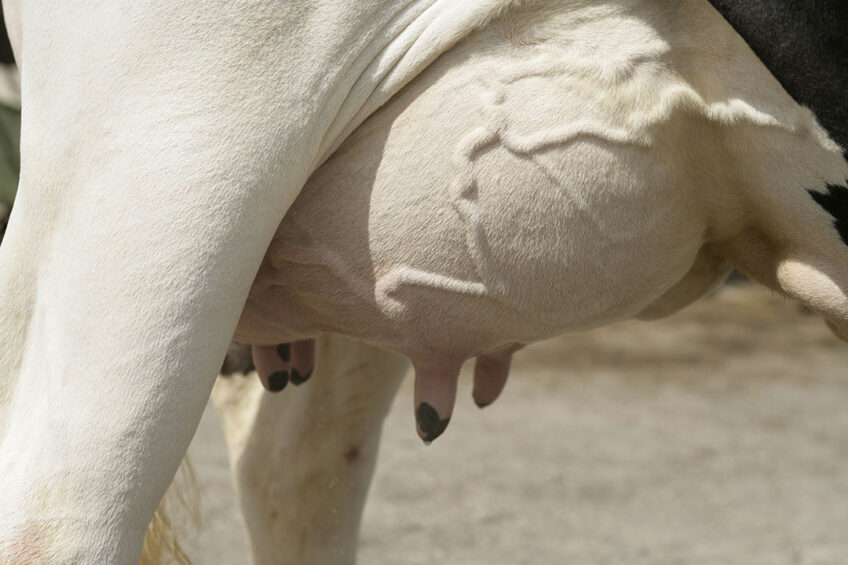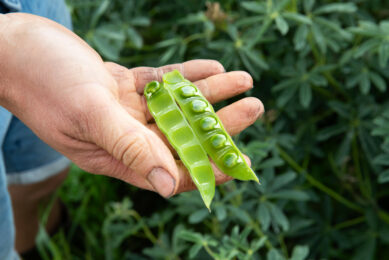Quality minerals for improved udder health

Mastitis is an inflammation of the udder, usually caused by the invasion of bacteria through the teat canal. It can also be attributed to mycoplasmal, fungal or algal infections; mechanical trauma (such as teat injuries); thermal trauma and toxins. The inflammation consists of white blood cells (leukocytes, or somatic cells) released into the mammary gland in response to the invasion, where there is a local battle.
These bacteria multiply and produce toxins that cause injury to milk-secreting tissue and various ducts throughout the mammary gland. The white blood cells also release toxins, engulf bacteria and cause temporary local destruction of the tissues. The elevated somatic cell count (SCC) is a measure of the degree of inflammation in the udder.
Underestimated the cost of mastitis
Mastitis is considered to be one of the costliest dairy cattle diseases. The losses associated with mastitis are often underestimated at farm level because many go unseen, such as reduced milk production and lower herd growth potential, which can impact expansion. Multiple factors contribute to mastitis and SCC, ranging from environmental issues to the milking procedure to poor immune system function. Bacteria are generally the cause of most mastitis cases, originating from already infected udders, replacement animals coming onto the farm and the environment, including cubicle bedding, manure and poor milking hygiene.

Udder and teat integrity
Promoting udder and teat integrity goes a long way toward reducing the risk of infection. Ensure good hygiene during and after milking (for example, using teat dip or spray), make sure the milking machine is functioning correctly (for example, not leaving the clusters on for longer than necessary) and keep udders clean. Disinfecting teats and scoring udders for hygiene is also essential for reducing the pathogenic load during the milking routine. If cows are consistently entering the milking parlour with dirty udders and teats, then the housing and management systems need to be improved.
Alternatives to antimicrobials
Most antibiotics used in dairy herds are related to udder health, of which a large proportion are dry-cow products. However, concern has risen over conventional antibiotic treatments of mastitis due to the global emergence of multiple antibiotic-resistant bacteria. Because of this, it is now essential to focus on preventive strategies instead.
- Preventive dry cow therapy, to treat all teats on all cows, can no longer be considered prudent. Successful udder-health management should aim to minimise antimicrobial use. A study showed that herds participating in a veterinary herd health management programme and herds selectively drying off cows used fewer antimicrobials compared to herds not participating in such a programme or applying blanket dry-cow therapy (Stevens et al., 2016). There are useful screening tools available that perform real-time diagnostics to make selective dry cow therapy a practical approach, where only high-risk quarters are ultimately dry cow treated.
- Internal teat sealants are an adequate alternative to antibiotics for preventing low SCC cows from becoming infected during the dry period (Cameron et al., 2014; Cameron et al., 2015; Rupp and Boichard, 2003). Alternatives to internal sealants are external teat dips, which protect against new infection by covering the teat end with a disinfectant. However, these need to be reapplied frequently. Many breeding programmes include genetic selection for mastitis resistance; yet, only a small part of the solution for good udder health is found in the breeding programmes (Rupp and Boichard, 2003).
- Development of vaccines to prevent or control mastitis is an important goal. Coliform mastitis control has made good progress through mutant gram-negative vaccines. Development of an effective Staphylococcus aureus vaccine is an ongoing research objective

Antibiotic Reduction Special
Moving away from antibiotics can be challenging and requires a new way of thinking. This special edition explores the latest methods for raising healthy livestock without the use of preventive antibiotics.
Role of minerals
Trace minerals play key roles in many enzyme systems, protein synthesis, carbohydrate metabolism and antioxidant systems, as well as immunocompetency. Therefore, an essential component of a mastitis control programme is to support immune function, which can be achieved through improved nutrition, vaccination and the removal of potential immune suppressors. Udder health and immune function are influenced by the mineral status of the animal.
Trace elements in particular including:
- copper
- selenium
- zinc
Interestingly, the most common time for animals to become infected is during the dry period, making good dry cow management crucial to minimise the chance of clinical mastitis.
Copper
Copper is known to affect the phagocytotic action of some white blood cells, and benefits to udder health have been shown with copper supplementation. Scaletti et al. (2003) noted that dairy cows supplemented with copper exhibited a less severe infection following an E. coli challenge, compared with non-supplemented animals. Another function of copper linked to the efficacy of the immune system is the copper-containing enzyme complex cytochrome c oxidase. Reduced levels of this complex affect the capacity of neutrophils to neutralise pathogens via respiratory burst (Jones and Suttle, 1987).
Selenium
In addition to its antioxidant role, selenium also regulates immune function (Ibeagha et al., 2009), and selenium-deficient animals are usually immunocompromised. In dairy cows, selenium influences both the acquired and adaptive immune systems, including antibody production, cell proliferation, cytokine production and neutrophil function (Larsen, 1993; Ndiweni and Finch, 1995).
Zinc
Zinc is a crucial component of proteins involved in nearly all metabolic processes, as well as DNA-binding proteins and transcription factors. Deficiency can lead to parakeratosis, evident by thickened, hardened and cracked skin. Because one of the critical barriers to udder infection is the integrity of the integument covering the teat, any compromise to the skin can increase the risk of infection via the teat canal.
Organic trace minerals in action
Selenium, zinc, copper and manganese all play a vital role in supporting immune function, which aids in addressing udder infections. The use of organic trace minerals (such as Bioplex® and Sel-Plex® from Alltech) can play a crucial role in maintaining normal reproductive and immune function as well as udder health. These organic trace minerals allow the animal to build up reserves for use during periods of stress, such as calving and early lactation. Alltech has shown that this modern approach can optimise performance at significantly lower inclusion levels. Research has linked the supplementation of trace elements with lowered SCC (Foltys et al., 2004).
Conclusion
There is a significant economic advantage to be gained by improving reproductive efficiency and udder health in dairy herds. Strategies to promote these aspects should be multifactorial; however, nutrition can play a vital role in maximising optimal fertility and immune function. Optimal supply of key trace minerals is crucial to support the cow through her production life.
Join 13,000+ subscribers
Subscribe to our newsletter to stay updated about all the need-to-know content in the dairy sector, two times a week.










